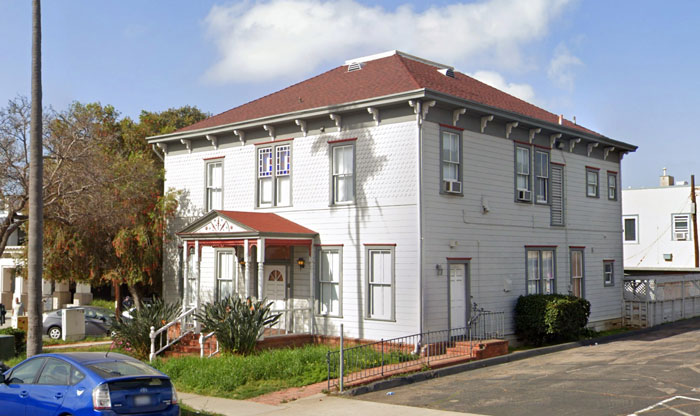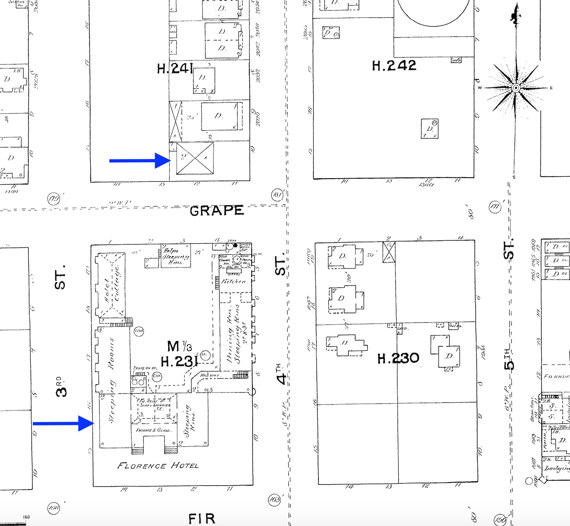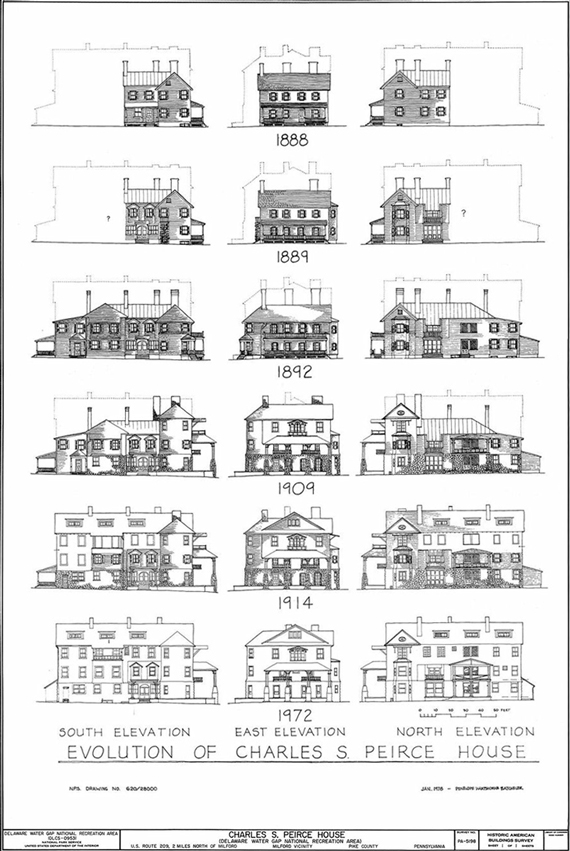|
Ch-Ch-Changes…Evaluating Historic Places
By Bruce Coons
March/April 2023
 2004 Fourth Avenue. Courtesy Google street view, December 2020
 Florence Hotel Livery, 2004 Fourth Avenue, San Diego. Sanborn Fire Insurance maps show this resource was constructed c. 1888 as a carriage house/livery stable or accessory structure serving the Florence Hotel (later known as Robinson Hotel). By 1906, the Italianate building had become a single-family home, and by 1921, the single-family home had been repurposed again, this time into an apartment building. Despite two changes in use, this carriage house still retains exterior integrity, highlighting its unique historical evolution. Sadly, these normal changes in the building’s life contributed to the site being deemed non-historic. |
 A HABS (Historic American Buildings Survey) image of the C.S. Peirce House in Milford, Pennsylvania from 1888 to 1972. A project of continual re-construction and expansion that added new levels and rooms, the old incorporated into the new shows the evolution of a historic house. Courtesy HABS |
One of the great misunderstandings or myths about the historic preservation of a house or building is that it must be “frozen in time” to qualify for historic designation.
But this is not the case. The National Register of Historic Places guidelines clearly state: "Additions and changes to a historic building over time need to be evaluated for their own potential significance, and the historical and architectural importance of the building as a whole should be considered."
The historic value of a house should not solely be determined by its historic appearance, but also by the cultural and historical context in which it was built as well as the changes it has undergone over decades or generations.
Changes to a historic building's appearance over time are a natural part of its life and reflect the changing tastes and needs of the people living in it. They should be considered part of the house or building’s historic significance. Changes may occur due to fashion and new technology and natural wear and tear. These changes can tell a story about the people who lived in the house and how they adapted to the changing world and economic conditions that affected them.
The addition of new rooms or the removal of old ones, the installation of new windows or doors, the enclosure of a porch, or the repainting of the exterior may alter the house’s appearance, but they may also provide important information about its history, climate, building materials, and the ongoing life and culture of the community.
Misguided interpretations of historic designation guidelines mistakenly or purposely have had devastating impacts on historic architecture, sites, and neighborhoods.
It is particularly vital to consider the evolution of our culturally diverse and low-income neighborhoods when evaluating a house or building and its particular culture and history. This approach can help us understand and appreciate the social and cultural significance of the landmark, its historical context, and the community story. This understanding can help us to make better informed decisions about how to preserve and protect our historic places for future generations.
Unfortunately, good homes are being demolished because a house will have changes made merely by the act of living in them, lack of economic means, or diverse cultural influences. This has led to formerly intact streets and neighborhoods being lost by the piecemeal and insidious removal or remuddling of neighboring homes.
Saving historic places that embody a community's unfolding story and cultural heritage is one of the best ways to preserve a diverse cultural environment and help preserve the natural occurring affordable housing stock as well.
I highly recommend reading How Buildings Learn: What Happens After They're Built by Stewart Brand and viewing his videos.
|
2024
2023
2022
2021
2020
2019
2018
2017
2016
2015
|






